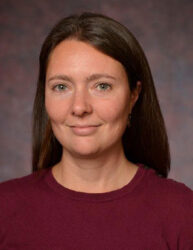Phoebe Stapleton, Ph.D. Gives Exclusive Interview to People Magazine, Earth Day Issue:What This Scientist Says You Need to Know About Hundreds of Thousands of Plastic Particles in Your Drinking Water

Phoebe Stapleton Ph.D.
Associate Professor
Environmental and Occupational Health Sciences Institute
Each liter of water contained an average of 240,000 particles from seven different types of plastics. Nearly 90 percent of these particles were nanoplastics made up of synthetic chemicals with potentially dangerous health effects, such as immune dysfunction and carcinogenicity; the remainder were larger microplastics.
PEOPLE speaks with Stapleton to get answers about the unsettling findings in this week’s issue featuring our Earth Day Special.
How do these particles get into the water?
Stapleton: Of the three different brands of water we examined, the particles all came from the bottle and the cap. But with two of the brands, the highest concentrations were in the water before it got into the bottle. We haven’t done an analysis to test if it came from the source water or if it came from the filtering and processing.
Stapleton: The body has a way to clear microsize particles, but the smaller (nano) particles are able to bypass those protections. For example, within 24 hours of these particles entering the gastrointestinal system, we were able to find them in maternal tissues (in animal test subjects) and in placenta and fetal tissues.
What’s the difference between microplastics and nanoplastics?
Stapleton: A microplastic is anywhere between one micron and five millimeters in size. That’s about the size of a grain of sand, a grain of salt, a sesame seed. It’s something you can see, but just barely. Nanoparticles are about a thousand times smaller than the smallest micro particle. They’re invisible to the naked eye and in the bacteria and virus size range.
Source: People.com – April 5, 2024
Copyright © 2021, Rutgers, The State University of New Jersey

